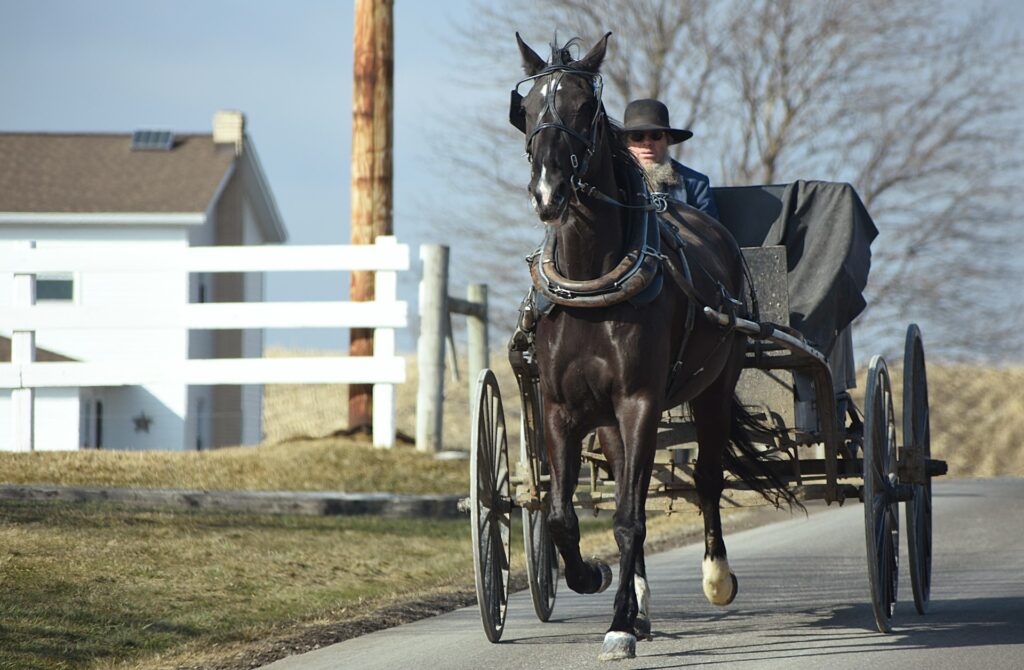The Amish community, known for its simple living, plain dress, and reluctance to adopt many conveniences of modern technology, has always intrigued those outside their culture. Despite their seemingly old-fashioned lifestyle, the Amish are not only self-sufficient but also quite adept at navigating the economic realities of the 21st century. This article explores the various ways the Amish community generates income.
Agriculture: The Traditional Backbone
Historically, agriculture has been the mainstay of Amish livelihoods. Amish farms are renowned for their high-quality, organic produce. Dairy farming is particularly prevalent, with many Amish families owning and operating dairy farms. They often sell milk to local co-ops or national dairy companies. Additionally, the Amish engage in crop farming, with corn, soybeans, tobacco, and hay being common crops. Their commitment to traditional, non-mechanized farming methods appeals to consumers seeking organic and sustainably produced food.
Small Businesses: A Growing Trend
In recent years, there has been a significant shift among the Amish, with many turning to small business ownership. These businesses vary widely, from construction companies to furniture making, quilt shops to bakeries. Amish craftsmanship is highly valued, especially in furniture making, where their skill in creating high-quality, durable, handcrafted furniture is well-known. These businesses often cater to the broader non-Amish market, offering products both locally and through online platforms.
Tourism: Capitalizing on Cultural Interest
Tourism has become a notable source of income for many Amish communities. The public’s curiosity about the Amish way of life has led to the growth of tourism-related businesses. This includes guided tours, bed-and-breakfast establishments, and the sale of Amish-made goods to visitors. Amish restaurants offering traditional Amish cuisine have also become popular among tourists.
Crafts and Quilts: The Artistic Side
The Amish are renowned for their exquisite handmade quilts and crafts, which have become collectors’ items over the years. The making and selling of these items provide a significant source of income for many Amish women and families. These goods are sold at local markets, craft fairs, and increasingly online, reaching a wider audience.
Working in Non-Amish Businesses
Some Amish individuals find employment in non-Amish owned businesses, particularly in areas where agricultural opportunities are limited. They typically look for work that aligns with their values and skill sets, such as carpentry, metalworking, or manufacturing. While they avoid jobs that require high levels of technological engagement, they are known for their hard work and reliability.
Community and Financial Support
The Amish strongly believe in mutual aid and community support. This principle extends to their economic practices as well. They often participate in community-shared funds, which help support members in times of need, whether for health, business, or personal crises. This communal financial support is a critical component of their economic resilience.
The Amish community, while maintaining its traditional values and practices, has shown remarkable adaptability and entrepreneurial spirit in its economic ventures. From farming and crafts to small businesses and tourism, the Amish have found diverse and sustainable ways to thrive economically without compromising their way of life. Their success serves as a testament to the viability of alternative economic models in a modern world.
Real Estate and Land Management
In some Amish communities, income is also generated through real estate and land management. While the Amish traditionally prefer to keep land within the community, there are instances where they engage in land rental and sales to outside parties. This practice is more common in areas where the Amish populations are dense, and land is at a premium. Income from these activities is often reinvested into the community or used to acquire more land for agricultural purposes.
Harnessing Renewable Resources
A noteworthy development in some Amish communities is the adoption of renewable energy sources, like solar and wind power, to run their businesses. This shift is primarily driven by the necessity to operate more efficiently and sustainably while adhering to their rules about electricity use. The sale of excess energy back to the grid can provide an additional source of income, although this practice varies greatly among different Amish communities.
Education and Training Services
Although less common, some Amish individuals offer services in education and skill training, particularly in areas like woodworking, metalwork, and other trades. These educational services are often geared towards younger Amish members, aiming to pass down traditional skills. However, they sometimes extend these services to non-Amish individuals interested in learning these crafts, thus creating another income stream.
Market Gardens and Roadside Stands
Market gardening is another way the Amish earn income, particularly those who do not have the land or resources for large-scale farming. These gardens produce a variety of vegetables and fruits, which are sold directly to consumers through roadside stands and local markets. This not only provides income but also helps in maintaining a strong connection with the local community.
Livestock and Animal Breeding
Breeding and selling livestock is another traditional way the Amish make money. This includes horses, which are not only used for transportation and farm work but also sold to non-Amish buyers. Breeding and selling other livestock like cows, pigs, and chickens, both for meat and as farm animals, is also a significant source of income for many Amish farmers.
A Blend of Tradition and Adaptability
The Amish communities’ approach to making money is a fascinating blend of tradition and adaptability. They have managed to preserve their distinctive way of life while engaging in a range of economic activities. Their success lies in their ability to balance their values with practical economic strategies, demonstrating a unique model of sustainability and community-oriented living in the modern world.
Frequently Asked Questions About the Amish Economy
Do the Amish pay taxes?
Yes, the Amish do pay both state and federal taxes. They pay income, property, sales, and other taxes just like other citizens. However, they are exempt from paying Social Security tax due to their religious beliefs and because they do not take social security benefits.
How do the Amish manage without modern technology in their businesses?
The Amish adapt their businesses to align with their values, which often means avoiding certain modern technologies. They use alternative methods like manual labor or animal power instead of motorized equipment. In some cases, they make limited use of technology, particularly if it doesn’t infringe on their community values.
Can non-Amish people buy Amish products or services?
Absolutely. Many Amish businesses cater to the general public. Non-Amish people can buy Amish products such as furniture, quilts, baked goods, and more. Some Amish businesses even have online platforms, although these are often managed by non-Amish partners.
Are Amish businesses typically successful?
Many Amish businesses are indeed successful. Their success is often attributed to their strong work ethic, quality of craftsmanship, and the niche appeal of their products and services in the broader market.
How do the Amish view wealth and financial success?
While the Amish do engage in business and value hard work, their culture emphasizes modesty, community, and not displaying wealth ostentatiously. Financial success is often viewed through the lens of how it can benefit the community rather than individual gain.
Do the Amish use banks or traditional financial institutions?
The Amish do use banks and other financial institutions, particularly for business transactions, such as loans and mortgages. However, within their communities, they often rely on informal networks and community-based lending practices.
How does the Amish education system prepare young people for work?
Amish education, which typically ends at the eighth grade, focuses on basic skills and practical knowledge. It is geared towards preparing young people for work within the community, emphasizing trades, farming, homemaking, and other skills relevant to their way of life.
Are there any environmental impacts of Amish businesses?
The Amish generally have a deep respect for the land and nature, which is reflected in their farming practices and businesses. Their preference for non-mechanized farming and use of renewable resources often means their environmental impact is lower compared to conventional practices. However, as with any community, there are variations, and some practices might have environmental impacts.
Do the Amish participate in local or national politics?
The Amish generally avoid entanglement in politics, consistent with their philosophy of separation from the world. They focus more on their community governance and less on national or state politics.
How has the Amish economy changed in recent years?
The Amish economy has become more diverse in recent years. While agriculture remains a cornerstone, there has been a significant increase in small businesses and artisanal crafts. The rise of tourism and online sales, facilitated by non-Amish partners, has also marked a notable change.






